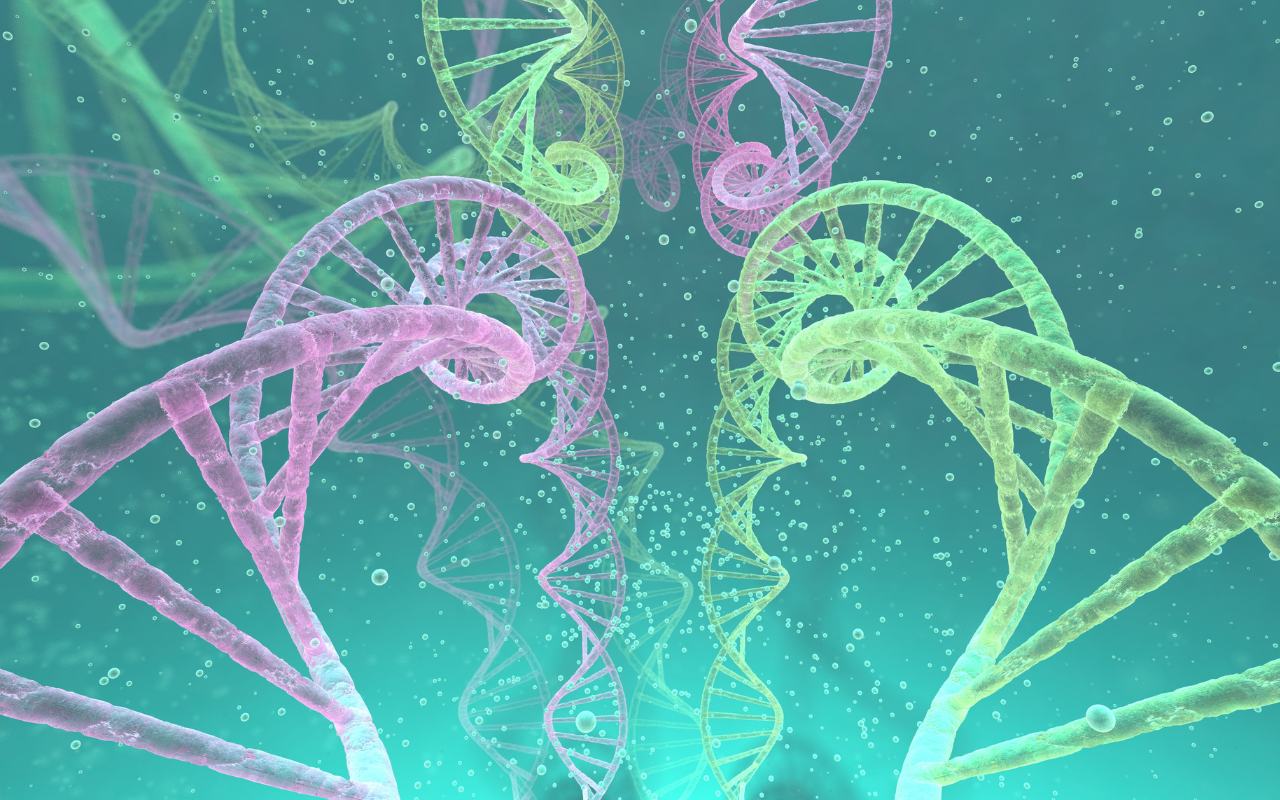DNA replication is a remarkable process that occurs within our cells, allowing the transmission of genetic information from one generation to the next. This intricate mechanism ensures the accurate duplication of the genetic code and is essential for growth, development, and cellular repair. In this blog post, we delve into the fascinating world of DNA replication, exploring its significance, steps involved, key players, and the latest research insights. Let’s embark on a journey through the genetic highway and uncover the wonders of DNA replication!
Table of Contents
The Importance of DNA Replication
DNA replication is the foundation of life as we know it. For any living organism, accurate replication of its DNA is crucial for the preservation and perpetuation of its genetic information. Whether it is a tiny microbe or a complex human being, this process ensures that offspring inherit a faithful copy of their parent’s genetic material, allowing the continuity of species across generations.
The fidelity of DNA replication is paramount to prevent errors or mutations that could lead to detrimental consequences, such as genetic disorders or cancer. Therefore, understanding the mechanics of this process is of immense significance in biology and medical research.
The Steps of DNA Replication
DNA replication is a fundamental process essential for the transmission of genetic information from one generation to another. It occurs during cell division and ensures accurate duplication of the DNA molecule. Let’s explore the step-by-step process of DNA replication, along with the key enzymes and hormones involved.
Initiation
Initiation in DNA replication is the crucial starting point where the replication machinery assembles to duplicate the genetic code accurately. This process involves specific key enzymes and hormones that play essential roles in setting the stage for successful replication. Here are the key points to understand initiation in DNA replication:
Origins of Replication: DNA replication commences at specific sites in the DNA molecule known as “origins of replication,” where the replication complex assembles.
Helicase: The enzyme helicase unwinds the DNA double helix at the origin, separating the two strands and exposing the nucleotide bases, creating a replication bubble.
Primase: Primase is responsible for synthesizing short RNA primers at the replication bubble, providing the starting point for DNA polymerase to begin replication.
DNA Polymerases: Different types of DNA polymerases, such as DNA Polymerase III in prokaryotes and DNA Polymerase α, δ, and ε in eukaryotes, take part in DNA synthesis during initiation.
Single-Strand Binding Proteins (SSBs): SSBs stabilize the unwound DNA strands, preventing them from re-annealing before replication.
Initiation Factors: Specific proteins, known as initiation factors, are required to facilitate the proper assembly of the replication machinery at the origin.
Hormones: In certain eukaryotic cells, hormones like estrogen and androgen can influence DNA replication and cell division.
Understanding the intricacies of initiation in DNA replication and the roles of these key enzymes and hormones is essential for comprehending the complex and fascinating process of DNA replication.
Elongation – Leading Strand
Elongation of the Leading Strand is a pivotal phase in DNA replication, where accurate synthesis of the new DNA strand occurs in a continuous fashion. This process involves several key enzymes and hormones that play critical roles in ensuring the fidelity of replication. The leading strand elongation proceeds as follows:
DNA Polymerase III: The primary replicative enzyme in prokaryotes, DNA Polymerase III, binds to the primer and adds complementary nucleotides in the 5′ to 3′ direction, synthesizing the leading strand with precision.
Single-Strand Binding Proteins (SSBs): SSBs stabilize the unwound parental DNA, preventing re-annealing, and facilitate the efficient binding of DNA Polymerase III to the template strand.
Sliding Clamp (PCNA): Proliferating Cell Nuclear Antigen (PCNA) acts as a sliding clamp, ensuring DNA Polymerase III remains attached to the template strand during replication, enhancing processivity.
Clamp Loader (RFC): Replication Factor C (RFC) functions as a loader for the sliding clamp, efficiently assembling PCNA around the DNA, enabling smooth elongation.
The seamless cooperation of these enzymes and hormones in elongating the leading strand guarantees the faithful replication of the genetic code, thereby preserving the integrity and functionality of the cell’s DNA.
Elongation – Lagging Strand:
During DNA replication, the lagging strand is one of the two template strands where DNA synthesis occurs discontinuously in short fragments called Okazaki fragments. This occurs because DNA synthesis can only proceed in the 5′ to 3′ direction, and as the replication fork opens, the lagging strand is exposed in the opposite direction. Here are some key points about the elongation process on the lagging strand, along with the key enzymes and hormones involved:
Okazaki Fragments: The lagging strand is synthesized in short fragments known as Okazaki fragments, typically ranging from 100 to 200 nucleotides long. DNA polymerase synthesizes these fragments, adding nucleotides in the 5′ to 3′ direction.
DNA Polymerase III: In prokaryotic cells, DNA Polymerase III is the primary enzyme responsible for elongation on both the leading and lagging strands. It has a high processivity, allowing it to add nucleotides continuously to the leading strand and in short bursts during Okazaki fragment synthesis on the lagging strand.
DNA Ligase: As the Okazaki fragments are synthesized on the lagging strand, they remain unconnected. DNA Ligase is the enzyme responsible for sealing the gaps between these fragments by catalyzing the formation of phosphodiester bonds. This process creates a continuous DNA strand.
Single-Strand Binding Proteins (SSBs): These proteins stabilize the unwound DNA strands at the replication fork, preventing them from re-annealing and maintaining the single-stranded state necessary for replication.
Hormones and Regulation: While hormones are not directly involved in DNA replication, they can influence the cell cycle, which includes DNA replication. For example, cyclins and cyclin-dependent kinases (CDKs) regulate the cell cycle and can control the initiation of DNA replication during specific phases, ensuring precise replication and cell division.
Understanding the intricacies of DNA replication, including the elongation process on the lagging strand, is essential for grasping the fundamental aspects of genetics and cell biology. With this knowledge, researchers can gain insights into the causes of genetic disorders and diseases, paving the way for potential therapeutic interventions and advancements in medical science.
Replication Fork Progression:
DNA replication is a complex process that involves the formation of a replication fork, a Y-shaped structure where DNA synthesis occurs. This fork progresses bidirectionally from the origin of replication, ensuring accurate duplication of the genetic material. Several key enzymes and hormones play pivotal roles in facilitating replication fork progression. Here are the key points:
Replication begins at specific sites in the DNA called origins of replication.
Helicase is a crucial enzyme that unwinds the double helix, creating the replication fork.
The fork progresses bidirectionally as DNA polymerases synthesize new DNA strands.
Leading strand synthesis occurs continuously in the 5′ to 3′ direction, while lagging strand synthesis involves Okazaki fragments.
DNA Ligase joins the Okazaki fragments to form a complete DNA strand.
The replication fork moves at an average rate of 50 nucleotides per second in human cells, ensuring efficient and accurate replication.
Key Enzymes Involved:
Helicase: Unwinds the DNA double helix at the replication fork.
DNA Polymerases: DNA Polymerase III (prokaryotes) and DNA Polymerase α, δ, and ε (eukaryotes) catalyze DNA synthesis.
Primase: Synthesizes RNA primers necessary for the initiation of DNA replication.
Single-Strand Binding Proteins (SSBs): Stabilize the unwound DNA strands, preventing re-annealing.
DNA Ligase: Joins the Okazaki fragments on the lagging strand.
Hormones Influencing DNA Replication:
While hormones themselves do not directly participate in DNA replication, their presence and levels can influence cell division and replication rates.
Growth hormone, insulin-like growth factor (IGF-1), and thyroid hormones promote cell growth and replication in various tissues.
Estrogen and progesterone play essential roles in regulating DNA replication during the menstrual cycle, pregnancy, and embryonic development.
Hormonal imbalances can lead to disrupted DNA replication and are associated with certain health conditions.
Replication Termination
Replication termination is a critical step in the DNA replication process that ensures the accurate duplication of genetic material and the prevention of over-replication. This complex event involves several key enzymes and hormones that coordinate to halt the replication machinery at specific sites along the DNA molecule. Below are the key points explaining replication termination and the roles of enzymes and hormones involved:
Mechanism of Replication Termination:
Replication termination occurs when the DNA replication machinery reaches specific termination sites on the DNA molecule, known as “termination sequences” or “terminators.”
These termination sequences possess unique structural characteristics that signal the replication machinery to stop synthesizing new DNA strands.
Termination is a highly coordinated process that involves the interplay of multiple enzymatic activities and regulatory factors.
Key Enzymes Involved in Replication Termination:
One of the main enzymes involved in replication termination is the “Tus-Ter complex.” In bacteria, the Tus protein binds to specific terminator sequences (Ter sites) and acts as a barrier to the advancing replication fork.
The Tus-Ter complex acts as a polar terminator, allowing the replication fork to pass in one direction but not in the opposite direction, effectively halting replication at the termination site.
Another important enzyme is “Topoisomerase IV” (Topo IV), which is responsible for resolving intertwined DNA molecules, known as catenanes, formed during replication. Topo IV helps separate the replicated DNA molecules after termination.
Hormones and Cellular Signaling in Replication Termination:
While hormones are not directly involved in DNA replication termination, cellular signaling pathways play a crucial role in coordinating this process.
Checkpoint signaling pathways monitor the fidelity of DNA replication and ensure that replication is complete and accurate before cell division occurs.
Proteins like cyclins and cyclin-dependent kinases (CDKs) regulate the cell cycle, including the termination of DNA replication, by activating or inhibiting specific proteins at different stages of the process.
In summary, replication termination is a precisely regulated process in DNA replication, ensuring that genetic material is faithfully duplicated. The Tus-Ter complex and Topoisomerase IV are key enzymes responsible for halting replication and resolving DNA entanglements, respectively. Cellular signaling pathways, including those involving cyclins and CDKs, contribute to the coordination of replication termination and the overall cell cycle. Understanding this essential process helps us appreciate the complexity and accuracy of DNA replication, with potential implications for genetic research and disease prevention.
Conclusion
In conclusion, DNA replication stands as a fundamental and awe-inspiring process, ensuring the inheritance of genetic information across generations. This intricate mechanism allows living organisms to grow, develop, and repair at the cellular level, forming the basis of life itself. With a careful understanding of the steps involved, including initiation, unwinding, primer synthesis, elongation, and proofreading, researchers can appreciate the precision and accuracy that DNA replication demands.
The key players, such as DNA polymerases, helicase, primase, single-strand binding proteins (SSBs), and DNA ligase, orchestrate this symphony of genetic duplication, each playing a critical role in maintaining the fidelity of the DNA replication process. Recent advancements in genome sequencing and single-molecule imaging have further expanded our understanding, offering exciting prospects for personalized medicine and targeted therapies, especially in cancer research.
As scientists continue to unravel the complexities of DNA replication, the journey toward unlocking the mysteries of life persists. By recognizing the profound significance of DNA replication and harnessing its insights, we pave the way for innovative discoveries that may revolutionize healthcare, biotechnology, and our comprehension of the living world. Embracing this journey with curiosity and respect for the intricacies of DNA replication, we embark on a path of discovery that holds the potential to shape the future of scientific knowledge and human well-being.




